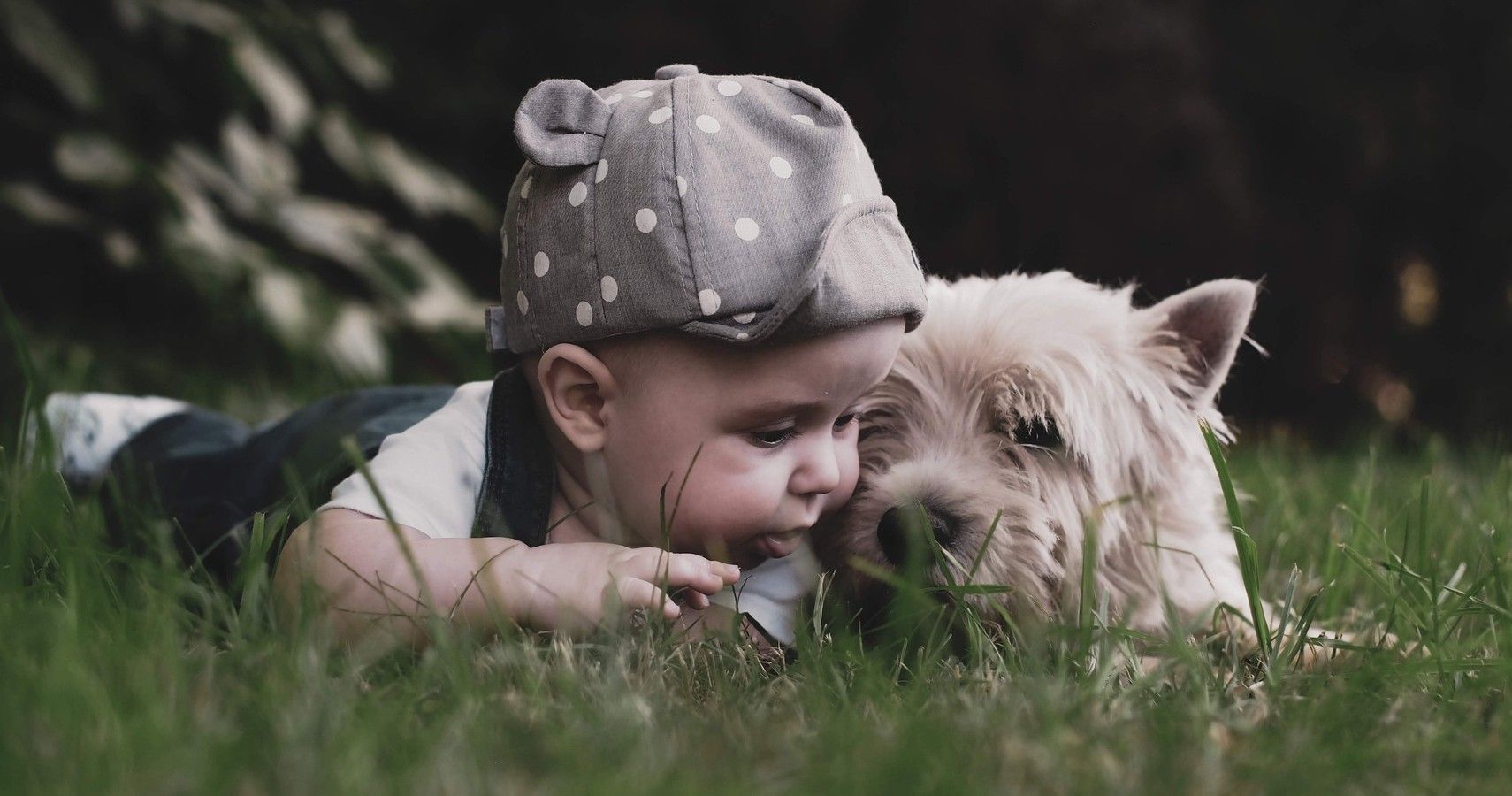The family dog bonds deeply with children. Now, new research shows that canines alter their behavior according to what the youngest members of the family do.
It was a busy day at work and you're exhausted, but you still have to make dinner. It seems like everyone in the house is against you, even the dog. While you stir the spaghetti sauce, your toddler is sitting at your feet crying with hands outstretched, saying, "Up, up, up!" Then you hear, "I'm hungry," whines your five-year-old. Your trusty best friend, Spot, is in on the rebellion –he's whimpering for a walk. You're probably right about your dog; he may be imitating your kids' behavior according to a study conducted at Oregon State University.
Researcher Dr. Monique Udell wondered how dogs interact with children. She recruited 30 kids between 8 and 17-years-old and asked them to walk along colored lines on the floor. Scientists observed how the children's dogs reacted. They looked for active synchrony, which is whether dogs and children were moving or were still at the same times. Researchers also noted how long the pets were within a meter of the children and if they walked in the same direction.
The OSU scientists found that dogs shared active synchrony with children 60.2% of the time, they were within a meter of their owners 27.1% and moved in the same direction 33.5%, as reported by KGW 8 News.
There was sufficient synchronization to prove the dogs were basing their behavior on what the children were doing. The researchers said even though dogs demonstrated a connection to the children in the study, canines synchronize at a higher rate with adult owners.
The findings are significant to families because they reveal that children and dogs share an important connection. This means that from a young age, our little ones need to be involved in caring for family pets. Kids may even play a crucial role in training canine friends.
The American Academy of Child & Adolescent Psychiatry explains that caring for pets benefits children by teaching respect for animals, responsibility and providing a friend they can confide in.
Mothers and fathers need to teach their little ones how to take care of the family dog. Parents need to carefully monitor children under the age of four since young children may not control impulses, accidentally harming animals. At this age, kids can refill food and water dishes. School-age children between five and ten years old can feed, clean and exercise dogs without active help. Parents need to observe so that pets aren't neglected.
Every family is different and owning a pet is not for everyone. If your family chooses to adopt a dog, it will probably form a special bond with your children, as the research from OSU shows. It is also an opportunity for your child to learn about caring for others.
Sources: KGW 8 News, Oregon State University, American Academy of Child & Adolescent Psychiatry

